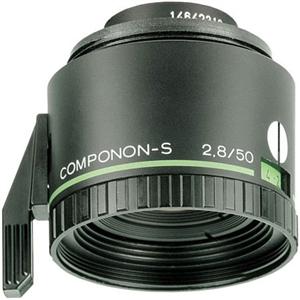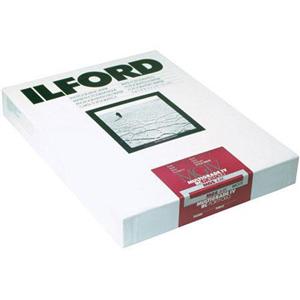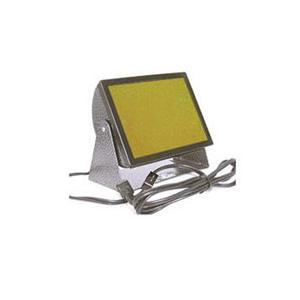

Leave a Comment!
14 Questions About The Black and White Darkroom
By Paul Light
What considerations should be made when choosing an enlarger lens?
 A. Sharpness is the most important issue. Your enlarger lens should be as sharp as your camera lens. I have been very pleased with Schneider Componon-S lenses. With some lenses your lens should be longer than your normal lens for the given format, otherwise the image will be soft around the edges. If you can find a lens that is shorter than your normal lens and is not soft around the edges, you will not have to raise the enlarger head nearly as high when making 16"x20" or larger prints. Lenses that have very wide aperture settings offer the advantage of making it easier to print very dense negatives as well as make focusing easier with 16"x20" or larger prints.
A. Sharpness is the most important issue. Your enlarger lens should be as sharp as your camera lens. I have been very pleased with Schneider Componon-S lenses. With some lenses your lens should be longer than your normal lens for the given format, otherwise the image will be soft around the edges. If you can find a lens that is shorter than your normal lens and is not soft around the edges, you will not have to raise the enlarger head nearly as high when making 16"x20" or larger prints. Lenses that have very wide aperture settings offer the advantage of making it easier to print very dense negatives as well as make focusing easier with 16"x20" or larger prints.
A. Beseler, a very reputable enlarger manufacturer with a long track record for making workhorse enlargers, has several basic enlargers starting at $255. These may not be adequate for all of your darkroom needs, because they sometimes have columns that are not rigid enough to make 16x20 or larger prints, but should be good enough to start with. They make very nice 8x10 and 11x14-inch black and white prints. Check out Black and White World's Enalrger Buying Guide for a full listing of currently available black-and-white enlargers.
What about used enlargers? Any brand and model that you would recommend?
A. You can pick up some great classic, but no longer made, used enlargers on eBay or Craig's List. If you are buying a used enlarger, have a camera repair person check the alignment for any excessive wear from misuse. There are occasionally good 4x5 Omega and Beseler used enlargers on the market, and the Omega B22 is always a good choice if you exclusively use 35mm film.
What's the most important feature or part of an enlarger that I should consider when choosing an enlarger?
A. To me the most important feature of the enlarger is the column. It should be so rigid that it will not shake while exposing paper. Most 4x5 enlargers are very rigid and also print 35mm and 120 film. Enlargers don't wear out as quickly cameras. Spend a little extra on it - it could be a lifetime investment. Another important thing to think about when buying an enlarger is the lens. Buy the sharpest lens you can afford (see above). Good lenses and good enlargers are expensive, but they are the heart of your darkroom and should be where most of the money is spent.
Why not just send everything out to a lab?
A. To set up a darkroom is not that expensive and is very rewarding. You can make 8x10 prints for a lot less than sending them out to a lab and best of all have complete control of the quality of the print. Besides, these days, black-and-white photo labs are few, far between, and expensive.
What are good basic papers to use for someone who is new to printing?
 A. For black and white negatives I usually use Ilford Multigrade IV RC paper. It is very easy to use and I it for most of my black and white printing. It is relatively inexpensive, but it is not archival.
A. For black and white negatives I usually use Ilford Multigrade IV RC paper. It is very easy to use and I it for most of my black and white printing. It is relatively inexpensive, but it is not archival.
What is an archival print?
A. An archival print is a black and white or color print that is printed on a type of paper and/or processed in a special manner so that the print will last a very long time. This is especially suitable for photographs for art collections, historical records, and family photographs that are being saved for future generations. Prints not processed to archival standards will only last about 20 years in theory. Hopefully the theory has some flaws, because a lot of photographers are working exclusively with printing materials that have a bad track record for permanence so far. Archival processing is discussed in tremendous detail in the book "The Permanence and Care of Color Photographs-Henry Wilhelm and Carol Brower."
Archival photographic theorists say that fiber based prints and tricolor carbon pigment prints may last 100 years or more. (Many digital paper makers claim their prints will last over 100 years, when used with the right ink.)
What papers are not archival?
A. Most papers are not archival. If a paper is designated RC (this stands for resin coated), you can safely assume it is not archival and cannot be made archival. Many people using RC paper feel that if the print is processed properly and stored carefully it will last a very long time. It is certainly faster and easier to work with RC paper, and may be worth the risk. I have made thousands of RC prints, but I do not expect them to last even 50 years. I have processed them and stored them carefully just in case they really do last for many years. To make an archival print in black and white is not too difficult. In color it is very complex and for all practical purposes impossible in a home darkroom.
To make a black and white archival print you must use fiber-based paper. Fiber-based paper is not difficult to use, although it is a bit tricky to get it to dry flat. You can find a large selection of fiber-base papers at big online photo retailers such as Adorama.
There is more than one way to process a print archivally. At present I think the method worked out by Ilford is best. It is straight forward and efficient. Once you have made an archival print, it is important that it be stored archivally. Print File, Adorama, and Century all make good archival storage boxes.
Do you need a special enlarger to make prints that are bigger than 8x10?
A. Generally, yes. When choosing an enlarger that can make prints larger than 8x10, it is important that the enlarger has a larger baseboard to accommodate the larger easel. Also you need a longer column to separate the distance between the film and the paper. For really big prints you may want to choose an enlarger where you can rotate the head to project the image onto a wall or a rotating column to project an image onto the floor. It is also important that an enlarger for big prints be really rigid. Thin columns and warped baseboards have a greater chance of ruining a big print from the enlarger moving slightly while exposing paper.
How does changing f-stops vs. changing the print exposure time change the appearance of the print?
A. Generally it should have no effect. However, some lower-quality lenses are visibly less sharp at some f stop settings. Also if you use unusually long printing times some enlarger shake may occur.
How do you get a long gray range in a print?
A. With existing negatives use a low contrast filter or low contrast paper and do lots of burning and dodging.
You can also control contrast range beginning with the exposure by exposing for significant shadows and film development by developing for significant highlights. A good system to keep contrast in control is the Zone System.
You can also use developers that let you vary contrast depending on dilution. 7 Photographer's Formulary Dr. Beer's Variable Contrast Paper Developer is a good example.
And if none of these solutions appeal to you try shooting 10 minutes before sunset and 10 minutes after sunset and then develop and print your film as you normally do.
How about a more complete idea of what is needed for a home darkroom? Equipment like trays, tanks, safelights, washers, plumbing.
A. This would vary a lot depending on your budget. If you have a big budget any camera store can solve this problem for you easily. However, if you are someone standing around with a new enlarger and no more money to spend - here are some recommendations. For trays use anything that holds liquids, including plastic food storage containers, paint trays, old record player covers -anything that holds liquids. If possible, it should be the size of your printing paper. These trays should not be used for other things once used for photography. Chemical deposits on trays from photographic chemicals can be hazardous to your health Work in black and white. A color darkroom is more expensive to both set up and maintain. Use a 7 1/2 watt red bulb as a safelight. Use your bathroom for a darkroom. It's an easy room to seal light out of. Put a strong, rigid board across your bath tub as a table for your enlarger and trays and when you are done printing, remove the board and wash your prints in a tray in the bath tub. For frequent use of a bathroom as a darkroom ventilation is critical. Fumes from photographic chemicals can be hazardous to your health.
I want to do only Black-and-White at home and I'm not quite sure what kind of enlarger I should get-Dichoric or Diffusion. What's the difference?
A. A dichroic enlarger is supposedly less sharp than a condenser enlarger although I've never noticed any significant difference. I use condenser enlargers, because I got them for a good price. If I were to go out today and by a new enlarger I would choose the dichroic head, because the softer light doesn't show dust as much, meaning less spotting time. Dichroic heads generally have built in filters in the head, which is very nice, and condensers generally do not.
What would you recommend for a safelight for a black and white darkroom?
 A. If you want to use a safelight that offers more options than a 15-watt red bulb, there are also a number of safelights between these two that cost $35 to $90. These safelights include several manufactured by Premier and Adorama. Adorama 5x7 Safelight with OC filter is a good deal for small darkrooms. Where there is a choice of filter you should use an OC (Light Amber) filter. Both safelights are designed for table or wall mounting.
A. If you want to use a safelight that offers more options than a 15-watt red bulb, there are also a number of safelights between these two that cost $35 to $90. These safelights include several manufactured by Premier and Adorama. Adorama 5x7 Safelight with OC filter is a good deal for small darkrooms. Where there is a choice of filter you should use an OC (Light Amber) filter. Both safelights are designed for table or wall mounting.
Paul Light is an adjunct professor of photography at Middlesex Community College in Bedford, MA and the owner of Lightwave Internet Photography Workshops. He has been teaching photography since 1972 and spends part of every day working in his darkroom. The answers to the above the questions reflect Paul Light's views and may or may not be shared by other photographers or teachers. Paul Light will continue to post expanded versions of this FAQ as he receives questions. Please email him at lightwav@tiac.net and be sure to mention you saw the FAQ in Black and White World.
Do you have any more questions...or think you have better answers?
Leave a comment!
How to Choose An Enlarger For Your B&W Darkroom